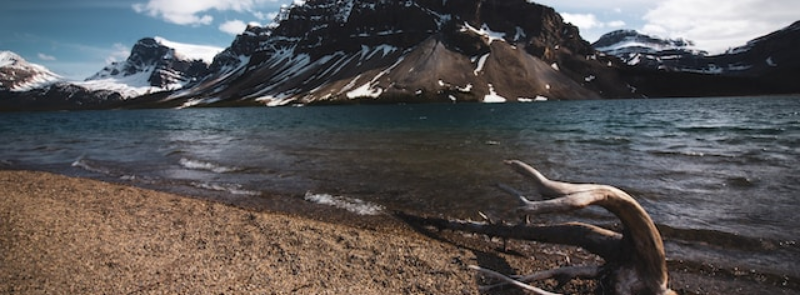
When It Occurs
Every June 15th
Official Website
Timeline
Days Passed (882)
# Hashtags
#NaturePhotographyDay #NaturesBeauty
June 15th marks Nature Photography Day, an occasion dedicated to exploring and capturing the beauty of nature during the vibrant summer season. Nature surrounds us everywhere, and you can engage in it regardless of your location or the equipment you have. Whether you're a seasoned photographer or new to capturing nature's wonders, we've got some exciting ideas and fascinating facts to spark joy and creativity on this Nature Photography Day!
History of Nature Photography Day
Nature Photography Day was established by the North American Nature Photography Association (NANPA) in 2006. NANPA created this day to promote the appreciation of nature and wildlife through photography and to emphasize the importance of protecting natural habitats. The day also aims to inspire both amateur and professional photographers to explore outdoor spaces and document the beauty of the environment.
Since its inception, Nature Photography Day has grown in popularity and become a widely celebrated event, with nature lovers and photographers around the world participating in photo walks, outdoor activities, and online events to showcase their best nature photos.
Purpose and Significance
-
Raising Awareness for Environmental Conservation: Nature photography is a powerful tool for environmental advocacy. Images of landscapes, wildlife, and ecosystems can bring attention to the beauty of the natural world and the need to preserve it. Through photos, people can witness the impact of climate change, habitat destruction, and pollution, inspiring them to take action to protect the planet.
-
Appreciation of Nature’s Beauty: The day encourages people to step outside and observe the intricate beauty of nature, whether it’s a sprawling landscape, a delicate flower, or a small insect. Nature Photography Day fosters a sense of connection with the environment and reminds people of the importance of conserving it for future generations.
-
Inspiring Creativity and Exploration: Photography is a creative outlet, and Nature Photography Day is a chance for people to experiment with capturing the world around them. Whether it's through close-up shots of plants and animals or sweeping vistas of mountains and forests, the day motivates photographers to explore their surroundings and see nature from new perspectives.
-
Bringing People Closer to Nature: In a fast-paced, technology-driven world, Nature Photography Day encourages people to slow down and spend time outdoors, appreciating the serenity and beauty of the natural environment.
How to Celebrate Nature Photography Day
-
Go on a Nature Photography Expedition: Whether you visit a local park, nature reserve, or your own backyard, take time to explore outdoor spaces with your camera. Look for interesting plants, animals, landscapes, or weather patterns that can make for a stunning photograph.
-
Participate in Photography Contests or Challenges: Many organizations and online communities host photography contests or social media challenges on Nature Photography Day. You can share your photos on social platforms using the hashtag #NaturePhotographyDay to connect with other photographers and nature enthusiasts.
-
Organize a Photo Walk or Nature Hike: Gather friends or family members and organize a photo walk or nature hike. Explore natural areas together, and capture unique perspectives of the scenery and wildlife you encounter.
-
Learn New Photography Techniques: Nature Photography Day is an opportunity to learn or improve your photography skills. You can experiment with different camera settings, lighting, and composition techniques to capture the best possible shots of nature.
-
Share and Exhibit Your Work: If you have a collection of nature photographs, consider sharing them with others, either online or through local exhibitions. Many nature photographers also contribute their work to conservation organizations to help raise awareness about environmental issues.
-
Promote Environmental Conservation: Use your photography as a platform to raise awareness about the importance of protecting nature. You can highlight environmental issues such as endangered species, deforestation, pollution, and climate change through your images, inspiring others to take action.
-
Connect with Photography Communities: Join photography groups, clubs, or online forums that focus on nature and wildlife photography. Engaging with a community of like-minded individuals can provide inspiration, feedback, and opportunities for collaboration.
The Role of Nature Photography in Conservation
Nature photography has long played a critical role in conservation efforts. Many iconic nature photographs have brought global attention to environmental issues, inspiring movements to protect endangered species and ecosystems. Notable examples include:
- Wildlife Conservation: Photos of endangered species such as elephants, tigers, and polar bears have helped raise awareness about the threats these animals face and motivated conservation efforts to protect them.
- Ecosystem Preservation: Landscape photography that captures untouched wilderness, rainforests, or wetlands can inspire appreciation for these ecosystems and promote efforts to preserve them.
- Environmental Advocacy: Photographs of pollution, deforestation, and climate change impacts can be powerful tools for advocacy, driving home the urgency of environmental action.
Tips for Capturing Great Nature Photographs
-
Lighting is Key: The best times to photograph nature are during the early morning or late afternoon when the light is softer and creates beautiful shadows and highlights. This is often referred to as the golden hour in photography.
-
Focus on Composition: Use techniques such as the rule of thirds, leading lines, and framing to create balanced and visually appealing compositions. Look for natural elements like tree branches, rocks, or water bodies to add depth and perspective to your photos.
-
Get Close to Your Subject: Whether you’re photographing flowers, insects, or animals, getting close to your subject allows you to capture fine details and create more intimate images. Use a macro lens for close-up shots or a telephoto lens for distant wildlife.
-
Be Patient and Observant: Nature photography requires patience. Spend time observing the behavior of animals or waiting for the perfect light to illuminate a landscape. The best shots often come to those who are willing to wait for the right moment.
-
Respect Wildlife and the Environment: When photographing nature, always be mindful of your surroundings. Avoid disturbing wildlife, and do not harm plants or habitats in the pursuit of a photograph. Ethical nature photography prioritizes the well-being of the environment.
Fun Facts About Nature Photography
- Ansel Adams, one of the most famous nature photographers, is known for his black-and-white images of American landscapes, particularly in Yosemite National Park. His work helped promote the importance of conservation.
- The invention of the camera trap has revolutionized wildlife photography, allowing photographers to capture images of elusive animals in their natural habitats without human presence.
- The earliest known nature photographs were taken in the 19th century, soon after the invention of photography. Early photographers often had to carry heavy equipment and endure difficult conditions to capture images of the natural world.
Conclusion
Nature Photography Day is a celebration of the beauty, creativity, and environmental significance of nature photography. Whether you’re a seasoned professional or an amateur with a smartphone camera, this day offers an opportunity to explore the world around you, capture its wonders, and share your appreciation for nature. By participating in Nature Photography Day, you contribute to a larger movement of environmental awareness and conservation, helping to preserve the planet for future generations through the art of photography.


